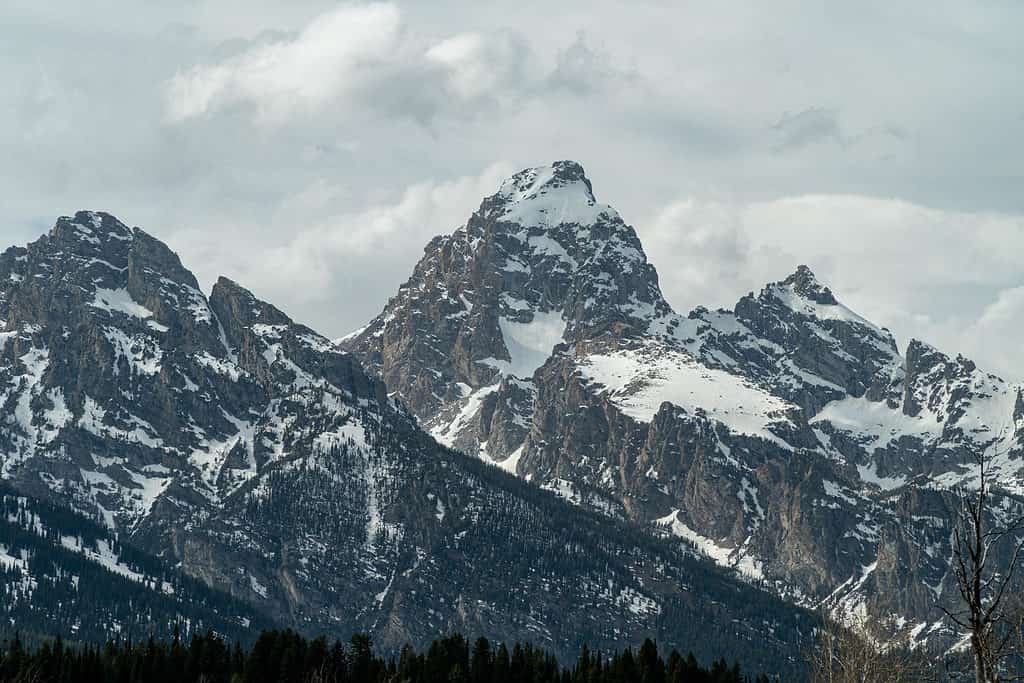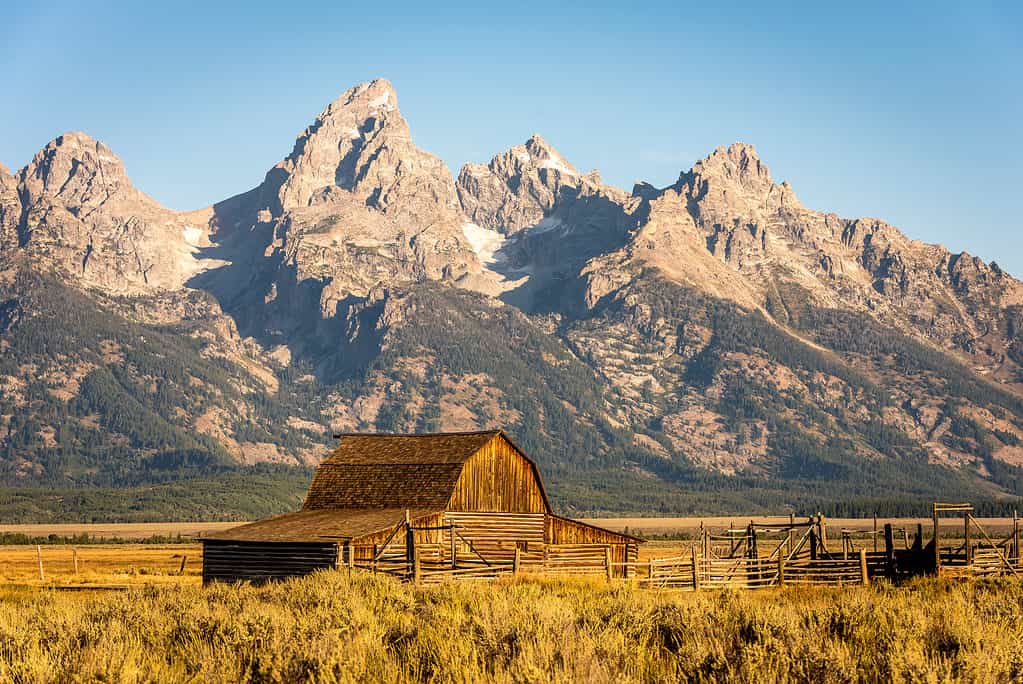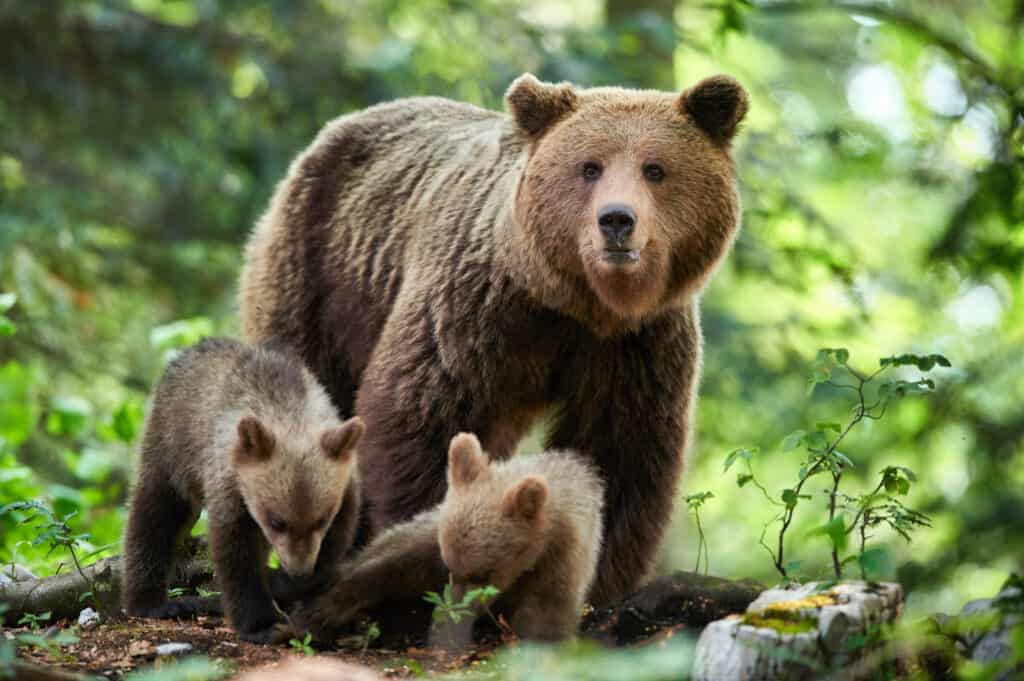When most people think of Wyoming, they think of wide open spaces and wind. And both of those things are very true year-round. But the spacious state also gets a fair amount of snow every winter. That makes driving a nightmare during much of the winter. However, it also means that some of the state’s numerous spectacular areas get covered in a gorgeous white blanket. And what is more beautiful than a pristine, snow-covered surface? Intrepid visitors often find winter the best time of year to go.
So, what is the snowiest place in Wyoming that you can visit? The article looks at this very question. It will also offer winter recreation ideas and take a glimpse at the local wildlife scene.
Read on to learn more.
What is the Snowiest Place in Wyoming?
Even though the entire state of Wyoming gets a fair amount of snow during its often bitterly cold winters, one area stands out above the rest. Portions of Jackson Valley often get hammered in the coldest months. Moose, a small community in Teton County, tops that list. Residents there must combat an average of 172.2 inches of snow every year.
And the snowiest city in Wyoming is Moran, which receives an average of 166.86 inches of annual snowfall.
Where is Moose, Wyoming?
Moose, Wyoming, is an unincorporated community inside Grand Teton National Park in Teton County. It sits on the beautiful Snake River. There are two types of inhabitants of Moose. The first is families that have privately owned land within the national park boundary. And the second is park employees. The Grand Teton National Park headquarters is in Moose and gets maintained by the National Park Service (NPS).
Multiple ranches in Moose are on the banks of the Snake River. However, most of them are now the property of the NPS. That includes the Murie Ranch. It was named a National Historic Landmark just over 15 years ago. And these days, it is the location of conversation and research work.

Moose is the snowiest place in Wyoming. It is located in Grand Teton National Park.
©RebeccaDLev/Shutterstock.com
What is the Snowiest Place in the United States?
Despite being the snowiest place in Wyoming, Moose’s snow average is nowhere near the snowiest spot in the United States. Instead, the snowiest place in the entire country is Crater Lake National Park, Oregon. This stunning national park gets a shocking average of 463.1 inches of snow yearly.

Crater Lake National Park is the snowiest spot in the entire United States.
©Matthew Connolly/Shutterstock.com
What is There to Do in Moose, Wyoming?
From its description, it sounds like there is not much to do in Moose, Wyoming. But the community has a surprisingly long list of activities. Visitors can start at the Craig Thomas Discovery and Visitor Center. From there, they can head out for a hike on one of the many nearby trails.
Alternatively, the area has four historical sections that may be of interest. Mormon Row offers stunning vistas and is a favorite of photographers due to their iconic barns. The Menor’s Ferry historic district features a general store (still open in the summer), ferry crossing, cabin, and other historical artifacts.
Tourists and interested locals can also visit the Chapel of the Transfiguration or the Murie Ranch historic district.
Unfortunately, the Craig Thomas Discovery and Visitor Center is closed during the winter due to the sheer volume of snow that Moose receives. So to experience Grand Teton National Park blanketed in white, guests will need to head to other parts of the park. And it is a spectacular place to visit in the winter. Visitors can take snowmobile tours, head out on a cross-country skiing adventure, or hit the trails on snowshoes.

Moose, Wyoming, is well-known thanks to the iconic images of historical structures (like this barn) in front of the stunning Grand Tetons.
©Matt Grimaldi/Shutterstock.com
What Animals Live Around Moose, Wyoming?
Wildlife viewing is one of the many reasons people travel from all over the globe to visit Grand Teton National Park (including Moose). There is such a high demand for snapshots of the local majestic creatures that the NPS established some key viewing areas. However, it is important to follow all park guidelines on feeding and animal interaction. Straying from those could pose a danger to yourself, others, and the animals. Here’s a brief look at some wildlife you may run across around Moose, Wyoming.
Mammals
The resident mammals are perhaps the greatest draw to the Grand Tetons (aside from the views). Larger creatures in the region include mountain goats, brown bears, black bears, wapiti, moose, mountain lion, gray wolf, white-tailed deer, bighorn sheep, pronghorn, and bison.
Or you may spy on some smaller critters. Those include yellow-bellied marmots, red foxes, American stoats, American minks, North American river otters, Pacific martens, American badgers, muskrats, or one of four squirrel species.
Fish
Trout fishing around Moose brings in anglers from all over. And with five trout species inhabiting the waterways, it’s understandable. Fishermen can pursue cutthroat trout, lake trout, brook trout, rainbow trout, or cutbow trout. But ten other species of fish also hang out in Grand Teton waters. Some species are bluehead suckers, mountain whitefish, Utah chubs, and convict cichlids.
Birds
Don’t forget to pack your binoculars when you travel to the Grand Tetons. The park is home to nearly 150 species of birds! A few include ferruginous hawks, greater yellowlegs, horned grebes, golden eagles, pine grosbeaks, killdeers, calliope hummingbirds, Northern harriers, Western meadowlarks, great blue herons, ospreys, and bald eagles.
Amphibians
You won’t run across too many amphibians around Moose. However, if you are lucky, you may spot a barred tiger salamander, American bullfrog, Western toad, boreal chorus frog, or Columbia spotted frog.
Reptiles
Additionally, the area is not home to many reptiles. So you can hike with confidence! There are only two species that have gotten spotted in the Grand Tetons. They are the common sagebrush lizard and the Western terrestrial garter snake.
Other
But what visitors will encounter is insects and lots of them. Hundreds of bees, moths, butterflies, bugs, and beetle species hang out in the national park. Over fifteen species of arachnids join them.

Brown bears are one of the numerous large mammals that live close to Moose, Wyoming.
©Piotr Krzeslak/Shutterstock.com
The photo featured at the top of this post is © Christy berry/Shutterstock.com
FAQs (Frequently Asked Questions)
Are winters harsh in Wyoming?
Unfortunately, winters are quite harsh in Wyoming, particularly in January. The state regularly receives heavy now, which gets blown into serious drifts thanks to heavy winds. However, most parts of the state are not covered in snow year-round. There are also nice, snow-free portions of winter.
Is Wyoming colder than Montana?
Yes, Wyoming is actually colder than Montana. It is the third coldest state in the nation, with Montana and Maine following closely behind.
What part of Wyoming gets the least amount of snow?
Certain parts of the Big Horn Basin only receive approximately 15 to 20 inches of snow annually. However, other areas (with higher elevation) get up to 40 inches.
What is the best time of year to visit Grand Teton National Park?
While Grand Teton National Park is a fantastic place to visit all year long, one time offers the perfect mix of fewer people and beautiful scenery. And that time is in the spring or early summer. Going no later than early July will help you avoid peak visitation season.
Thank you for reading! Have some feedback for us? Contact the AZ Animals editorial team.






